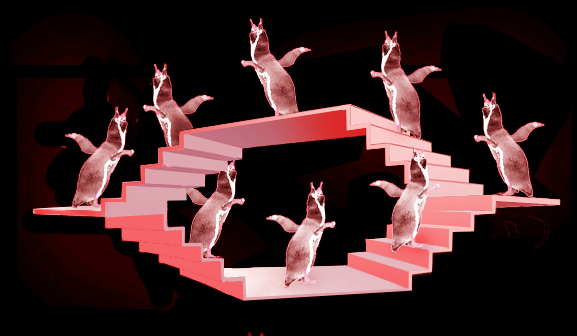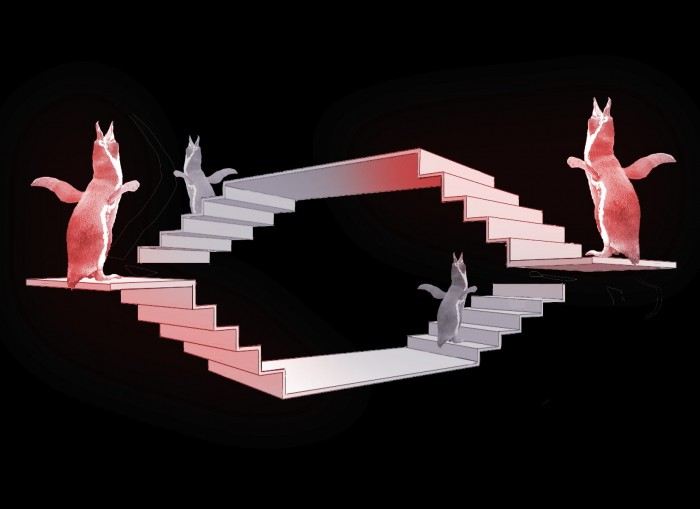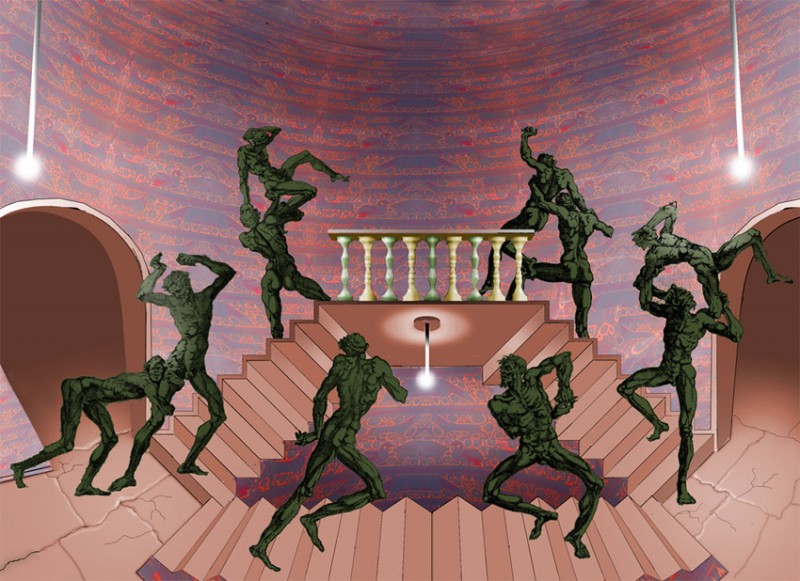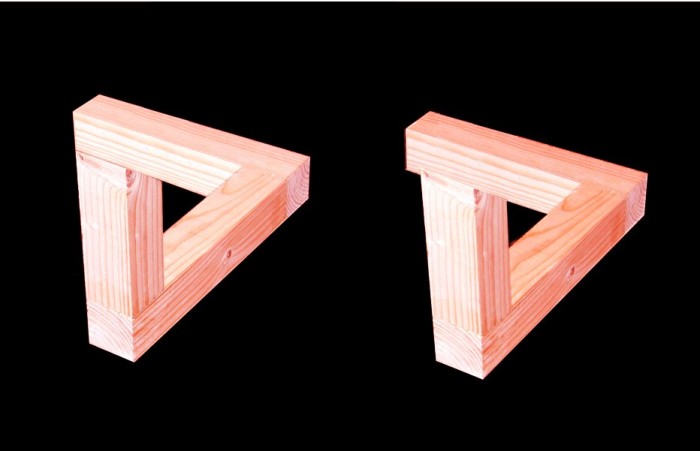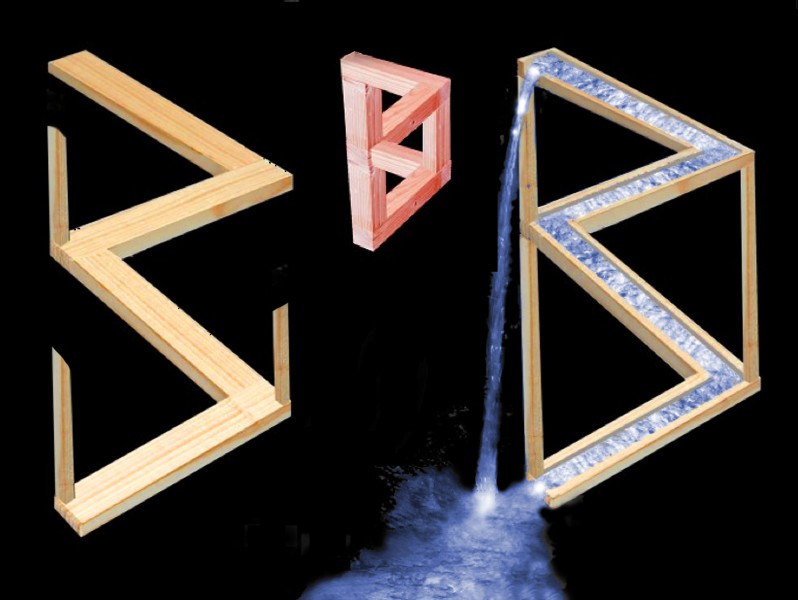Here’s a new kind of never-ending stair (I think). It’s like the famous never-ending staircase seen from above by M.C.Escher, called Ascending and Descending. However, in this new staircase instead of figures doomed to go downstairs for ever we have penguins destined to walk away from us forever. It’s based on the geometry of the object in my post on paradoxical size-constancy.
Here’s an animated version:
Like Escher’s famous impossible staircase, (and also as with the impossible tribar), the effect depends on our seeing a scene from a viewpoint from which points that would be at different distances from us seem to connect up. Here’s a view in more usual perspective of one configuration that would give rise to the ever receding staircase above. The trick depends not just on getting the alignment just right, but also on suppressing the usual perspective cues. Size diminution with distance is the most important one. The other is aerial perspective, in which contrast flattens out and colours get bluer with distance. I’ve put them both back below.
For more on staircases like Escher’s famous picture Ascending and Descending …..
